How a Character’s Personality Shapes Arc, Voice, and Goals
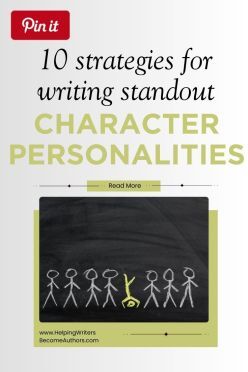 When it comes to creating memorable, emotionally resonant characters, your character’s personality may seem like it’s just a “flavor,” but in many ways it’s actually the foundation of the story itself. Your character’s personality influences everything: the character arc, the voice in both dialogue and the narrative (if the character has a POV), and the goals that shape your entire plot.
When it comes to creating memorable, emotionally resonant characters, your character’s personality may seem like it’s just a “flavor,” but in many ways it’s actually the foundation of the story itself. Your character’s personality influences everything: the character arc, the voice in both dialogue and the narrative (if the character has a POV), and the goals that shape your entire plot.
In many ways, your characters’ personalities can determine whether or not the story works. This is most obviously true when it comes that special “it” factor that creates unforgettably quirky or nuanced characters, but it’s even more true when it comes to the cohesion of your story’s deeper workings—where character, plot, and theme all come together.
In short, understanding personality might just be one of the most powerful tools in a writer’s toolbox.
In This Article:3 Reasons Why Personality Is the Secret Ingredient to Strong Characters4 Ways a Character’s Personality Drives Your Storytelling10 Practical Tips for Weaving Personality Into Character Arc, Plot, Dialogue, and MoreFAQs About Character Personality3 Reasons Why Personality Is the Secret Ingredient to Strong CharactersThe concept of personality brings a number of different connotations.
1. Personality Is a Consistent Set of TraitsFor starters, we recognize the technical definition of personality as a consistent set of traits, behaviors, emotional patterns, and motivations that shape how someone perceives the world, makes decisions, and interacts with others. Personality influences not just what people do, but why they do it, how they react under pressure, form relationships, pursue goals, and confront internal or external conflict.
2. Personality Is CharismaThere is also a certain sense of je ne sais quoi—that special sauce that makes an individual unique and interesting. When the word “personality” is brought up in a fictional context, we generally tend to think of characters with big, interesting (read: complex), and memorable personalities. They’re not beige; they’re intriguing in their relatability but also because of their unique ways of viewing and responding to the world.
3. Personality Is the Ego or False SelfHowever, personality can also be understood as the “false” or “egoic self”—a persona honed throughout our lives to allow us to move functionally through society and relationships, but which is ultimately limiting to the bigness of our true selves.
Writers can make good use of all three of these definitions. Thinking intentionally about a character’s personality allows us to craft a container in which we can sift through potential traits, reactions, and goals to find those that offer the most cohesion for the entire story. From there, we can explore ways to create characters with inherently entertaining or intriguing personalities—ones with the potential to join iconic classics such as Michael Corleone, Jo March, Tony Stark, Sarah Connor, Gandalf the Gray, and Hermione Granger (their names are as famous, if not more, than the stories they play in).





 4 Ways Personality Drives Storytelling
4 Ways Personality Drives StorytellingMost of the time, when writers consider a character’s personality, they focus primarily on outward traits. However, in so many ways, a character’s personality is the story. Here are four key considerations.
1. Personality Shapes the Character Arc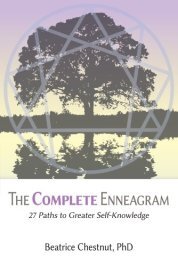
Although some personality systems offer static descriptions of traits, others like the Enneagram go deeper to point out specific transformational paths that can help people break past the ego-based facades and personas that limit us and create dysfunction. From this perspective, personality is all about the character arc!
Although most personality systems worth their salt (including MBTI, Human Design, Socionics, love languages, attachment styles, even astrology, and more) ultimately offer pathways of growth, the Enneagram is somewhat unique in its focus on specific paths of evolution (or devolution as the case may be) for each type. As I’ve explored before, this makes the Enneagram perhaps the most useful personality system for not just identifying and fleshing out a character’s personality, but for using that personality to create a cohesive character arc and, from that, plot and theme as well.
If you’d like more guidance, I’ve talked here about the Positive Change Arcs inherent in each of the nine Enneagram types and here about the Negative Change Arcs inherent in each type. I’ve also just released a full set of worksheets for each of the nine types. Each bundle includes questions to guide you in planning either a Positive or Negative Arc for each of the types, which will help you ensure your character’s arc, Lie vs. Truth, and Want vs. Need are aligned with the character’s personality, while also helping you brainstorm ways to make your character’s personalized arc consistent with the overall plot and theme.
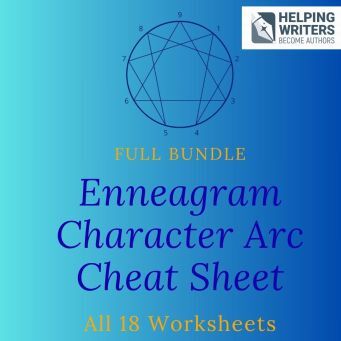
Enneagram Character Arc Cheat Sheet Bundle – Square for Etsy
2. Personality Informs Voice and DialoguePerhaps nothing in your story is more obviously influenced by personality than character voice. When we think of personality on the page, we think about voice more than anything else. How a character communicates—whether in dialogue or directly through the narrative in a tight POV—directly communicates personality. In my own experience, I’ve found that if my narrative is struggling, it’s often because I’m trying to write in the POV of a character whose voice just doesn’t have enough personality.
Personality will also directly influence your character’s dialogue style. This isn’t just about word choice. It’s also about the character’s preferred “style” of arguing or engaging in conflict. For example, a more aggressive personality type like an Enneagram 8 or an MBTI ENTJ will have an entirely different style of attack and defense (aka, initiating desires or responding to others’ desires) than will an Enneagram 9 or a Human Design Reflector.
Writing is all about the words, and nothing influences word choice, tone, emotional reactions, dialogue style, conflict resolution, or argument styles more than personality.
(You can find questions to help you uncover all of this is another of my hot-off-the-presses worksheets—the Character Interview, featuring 113 questions, many of them about personality.)
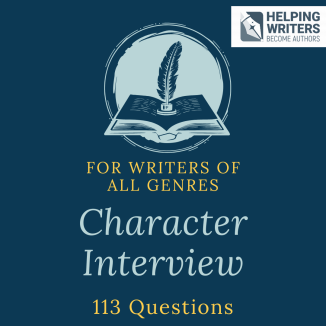
Character Interview Digital Worksheet for Writers
3. Personality Determines Shadow and Subconscious Goals“Personality” literally refers to what we see on the surface, and yet personality is formed by what is unseen—by what has been banished to the “shadow” or the unconscious. What we see in a personality is really just what’s left after certain traits, energies, beliefs, and identities have been deemed dysfunctional (usually unconsciously early in childhood) and “cut off” from the conscious personality.
This is important for storytellers because uncovering your character’s shadow will likely be an intrinsic part of the character arc. Character arc, at its simplest, is about expanding a limited perspective. Ultimately, this perspective is always about one’s self. Even if it seems to be a change in perspective regarding others or the world at large, ultimately this new “Truth” reflects upon the self’s place in relationship to others. This means the “limited perspective” (or Lie the Character Believes) is a product of the necessarily always limited personality, while the “expanded perspective” (or thematic Truth) is, at least in part, a restoration of some piece of the self previously lost to the shadow.
From here, we can see how character goals are almost always driven by this deeper subconscious motivation. A character’s personality isn’t just traits. More deeply, personality is what the character fears, represses, and unconsciously chases. Right there, you already have an entire story!
4. Personality Reveals Core Strengths and WeaknessesOnce we recognize personality as not just someone’s (presumably functional) persona, we can see the deeper truth that personality is, in fact, as much about inherent weaknesses as inherent strengths. Understanding this about your character’s personality gives you a fast track to the central internal conflict.
Stories run on the tension points between polarities—between strengths and weaknesses, between Lies and Truths, between delusions and epiphanies, between cowardice and courage, between mistakes and successes. All of these are inherent to your character’s personality. What is a stressful internal dissonance for one personality (e.g., balancing an Enneagram Five’s need for connection against the fear of overwhelm) is already a natural integration for another type (such as a Two, who struggles with different tension points).
A firm understanding of a useful personality type system can help you double-check your character’s development arcs for consistency and realism. When you’re in the early throes of writing, it can be easy to scribble things onto the page that, in the big view, don’t actually create the necessary and realistic tension points that arise from a consistent portrayal of human nature. An understanding of personality can guide you to which arcs are most natural to your characters.
10 Practical Tips for Weaving Personality Into Plot, Dialogue, and ArcAll right, enough theory! Let’s get practical. How can you use personality more intentionally to develop not just a better character, but a more cohesive and resonant plot and theme as well?
Let Personality Shape the Story1. Choose a Personality Framework Early in Your Planning Process— Use a system like the Enneagram or MBTI to explore internal motivations and potential arcs.
— I recommend focusing on one primary personality system to avoid overcomplication.
— Once you know your character’s personality, examine the system as a guide to help you find the most resonant growth path.
2. Use Personality to Predict Conflict Style— Start working on your plot by considering what conflict style (e.g., competing, avoiding, collaborating, etc.) best fits your character’s personality.
— Think about how your character argues, avoids, or escalates conflict based on type.
— This adds nuance to both dialogue and plot tension, while showing you what types of scenes are most likely to emerge when your character’s goals are met with obstacles (i.e., conflict).
— Your character’s conflict style is one of the richest places to mine for entertainment opportunities.
— For example, consider Han Solo’s classically sarcastic but often off-point retorts: “We’re all fine here now… how are you?”
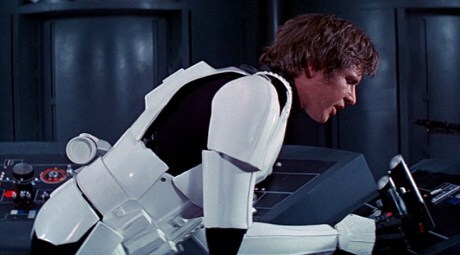
Star Wars: A New Hope (1977), 20th Century Fox.
–Ask: How can your character’s conflict style create dynamic, unusual, or larger-than-life scenes?
3. Let the Shadow Reveal the Theme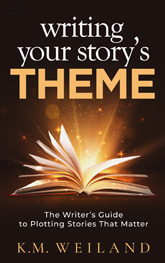
Writing Your Story’s Theme (Amazon affiliate link)
— Use the subconscious fear or flaw inherent in your character’s personality to point toward the story’s deeper thematic question.
— For example, a character with an avoidant attachment style might prompt thematic explorations of self-isolation or self-sabolage, such as Elsa in Frozen.
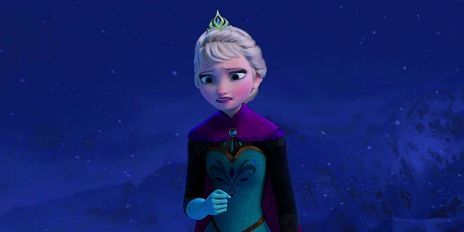
Frozen (2013), Walt Disney Pictures.
— If you’re unsure what might be in your character’s personality shadow, remember shadow theory’s simple guideline: “Whatever is visible in a person’s external personality is an indication that the exact opposite resides in the shadow.”
— For example, an MBTI INTP character—who relies most heavily on mental functions—may resonantly create a story about exploring the underworld of grief or the bewilderment of falling in love, such as R in Warm Bodies.

Warm Bodies (2013), Lionsgate.
4. Design Key Plot Beats Around Transformation Points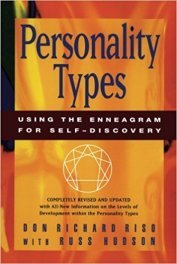
Personality Types by Don Richard Riso and Russ Hudson (affiliate link)
— Personality systems like the Enneagram particularly lend themselves to narrative arcs, since they suggest specific steps on a path to growth (in addition to my worksheets, you can check out Personality Types by Russ Hudson and Don Richard Riso for in-depth studies on this).
— For example, if you know your Enneagram Type Three character’s Lie is “I’m only worthy if I succeed,” you can shape the Midpoint or Third Plot Point to directly challenge that belief.
Let Story Reveal Personality5. Reverse-Engineer Personality From Your Plot— If your story idea came to you as a plot instead of a character, you can use what you know about the story’s external events to create the most resonant personality for your character.
— Ask: Based on the choices the plot indicates the character will need to make, what traits or fears will be likely to emerge in the character arc?
— From there, you can identify the most resonant personality type. +However, be sure to use the story events to discover (not dictate) who the character is.
— Character and plot should influence each other, but character should be the more dynamic force. This is to ensure that the plot feels organic and natural rather than contrived.
6. Analyze Plot Points to Discover Your Character’s Internal Values— Take a look at what your character sacrifices or clings to when the stakes are high. That alone can reveal your character’s personality type or predominant internal struggle.
— For example, as an Enneagram One, Jane Eyre always returns to the central question of right and wrong (as she sees it). When confronted by Rochester’s pre-existing marriage at the Third Plot Point, she decides to leave him less because she feels betrayed and more because she believes it would be morally wrong for her to illegally marry him.

Jane Eyre (2006), WGBH/BBC.
7. Refine Your Character’s Type After Writing the First Draft— Sometimes, you won’t really know who your character is until after you’ve written the story.
— After finishing the first draft, you can go back to revise voice and dialogue to more clearly reflect a unified personality for your character.
Bonus Implementation Tips8. Create a Quick-Reference “Personality Snapshot”— Character personality—like most things in storytelling—can get complicated fast. Not only can relying on a personality system provide shortcuts to identifying and remembering character traits, but so can keeping a sort of “personality outline.”
— You can include your character’s personality type, dominant traits, shadow fear, core desire, communication style, and more.
— When writing, I always try to review at least a small portion of my notes every day before I begin to keep them fresh in my mind.
9. Use a Worksheet or Interview to Stress-Test Alignment— Although beat sheets and character interviews should only be used to create a flexible guide, they can be helpful for nailing down the big picture of your character’s personality and arc.
— You can find the free version of my character interview here, and you can grab the updated fillable pdf of the worksheet here.
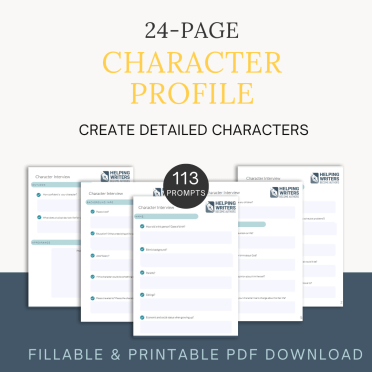
Character Interview Digital Worksheet for Writers
— If you’ve chosen to use the Enneagram as your primary personality typing system, you may also find some help in my brand new Enneagram Character Arc Cheat Sheets to check whether the story beats align with the character’s internal journey. (Each bundle contains both Positive and Negative Change Arcs for each type.)
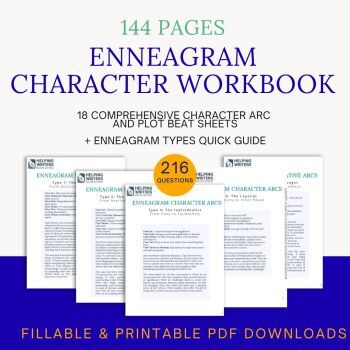
Enneagram Character Arc Cheat Sheet Full Bundle
10. Treat Personality as Dynamic, Not Fixed— I’m a big fan of the aphorism (usually attributed to George Box),
All models are wrong, but some are useful.
— This is true of so much in storytelling, and it is certainly true when it comes to personality systems.
— Although incredibly useful in helping writers distil the eminently complex topic that is the human personality, systems such as the Enneagram, MBTI, and more, are ultimately still limited and should only be used insofar as they are useful.
— Growth (or regression) in your character’s arc should always reflect believable changes in personality expression, and you should always listen to your own deep and instinctive understanding of the human ego, shadow, and persona above and beyond any fixed model.
Why Knowing Personality Unlocks Your Whole StoryYour character’s personalities aren’t just one layer of who they are. Personality is the central lens through which characters interpret the world, make decisions, and pursue goals. Personality is also the bridge between plot, theme, and character. Or perhaps we might think of it as the container that holds all three.
Personality shapes not only what your characters want, but why they want it, what’s standing in their way, and how they express that tension through action, voice, and internal conflict. That’s everything you need for your plot right there. When you understand your character’s personality, you gain access to the deeper psychological and thematic forces driving your story forward.
It’s important to remember there is no one “right” framework to use. Whether you gravitate toward the Enneagram, MBTI, Human Design, or something else, the most important step is simply choosing a system that resonates with you and then using it to stress-test your characters and their arcs.
FAQs About Character PersonalityWhat is the best personality system for writers to use?There’s no single best system, since each offers a different perspective. For instance, the Enneagram is ideal for exploring inner conflict and transformation, while MBTI is great for understanding cognitive wiring and behavior. The only thing that matters is choosing one that complements your writing style.
Can a character’s personality change throughout the story?Characters won’t change to a different personality, but how they relate from within the containers of their current personalities can dramatically evolve. A well-crafted character arc doesn’t usually change the core personality, but does change how the character expresses it. For example, withdrawn characters might learn to stay connected under pressure, without losing their introspective natures.
How does the Enneagram help with writing character arcs?The Enneagram maps core fears, desires, and defense mechanisms—all of which tie neatly into a character’s Lie, Want, Need, and Truth. Each Enneagram type also suggests likely growth paths and shadow pitfalls, which makes the system especially useful for writers when building Positive and Negative Change Arcs.
How do I figure out my character’s personality type?You can start by asking what your characters fear most, how they handle conflict, and what motivates their choices. Consider how they act under stress and in growth. Then compare those traits to personality types in your chosen system and adjust based on what best supports the arc you want to tell.
Want More?If you’re ready to dive deeper into using personality to guide your character arcs, check out my Enneagram Character Arc Cheat Sheets. Each worksheet bundle walks you through both Positive and Negative Change Arcs for all nine Enneagram types to help you align your character’s internal journey with your story’s external plot beats. You can use these digital worksheets when you’re outlining or revising to create arcs that are psychologically authentic and thematically resonant. Available now in my Etsy shop or via the Store tab above!
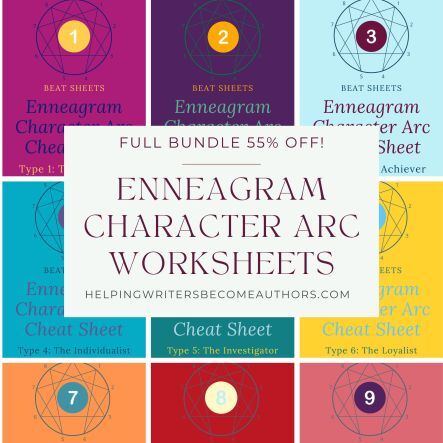
Enneagram Character Arc Worksheets
Wordplayers, tell me your opinions! What role does personality play in how you approach your characters? Do you start with a personality type, or does it emerge from the story? Do you use a system like the Enneagram or MBTI in your process? Tell me in the comments!Click the “Play” button to Listen to Audio Version (or subscribe to the Helping Writers Become Authors podcast in Apple Podcast, Amazon Music, or Spotify).
___
Love Helping Writers Become Authors? You can now become a patron. (Huge thanks to those of you who are already part of my Patreon family!)The post How a Character’s Personality Shapes Arc, Voice, and Goals appeared first on Helping Writers Become Authors.




